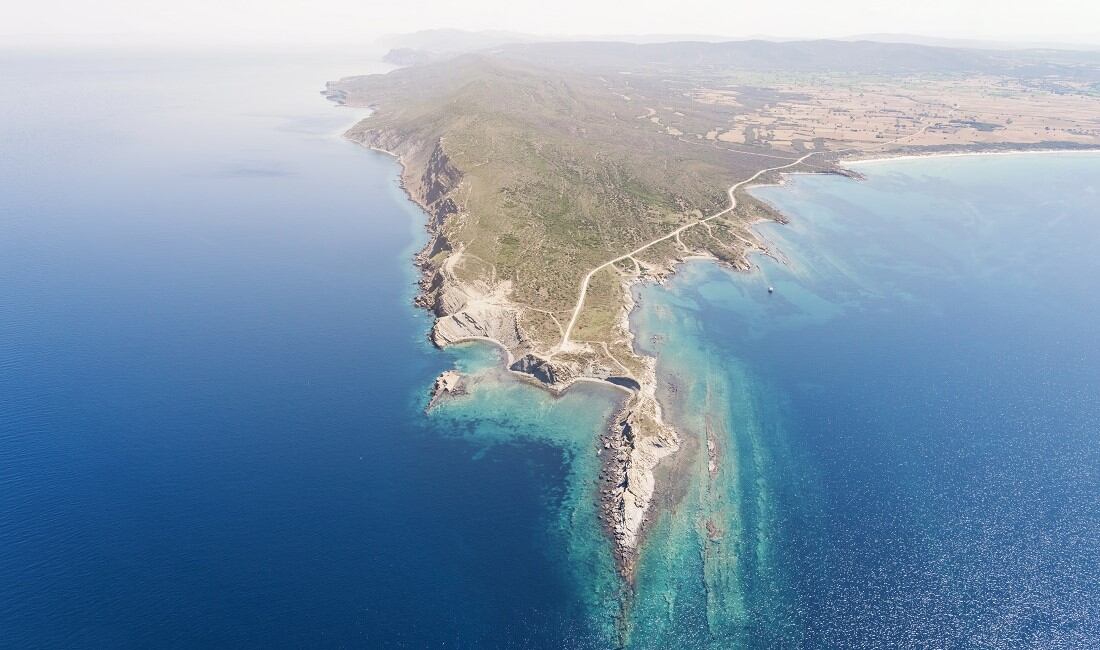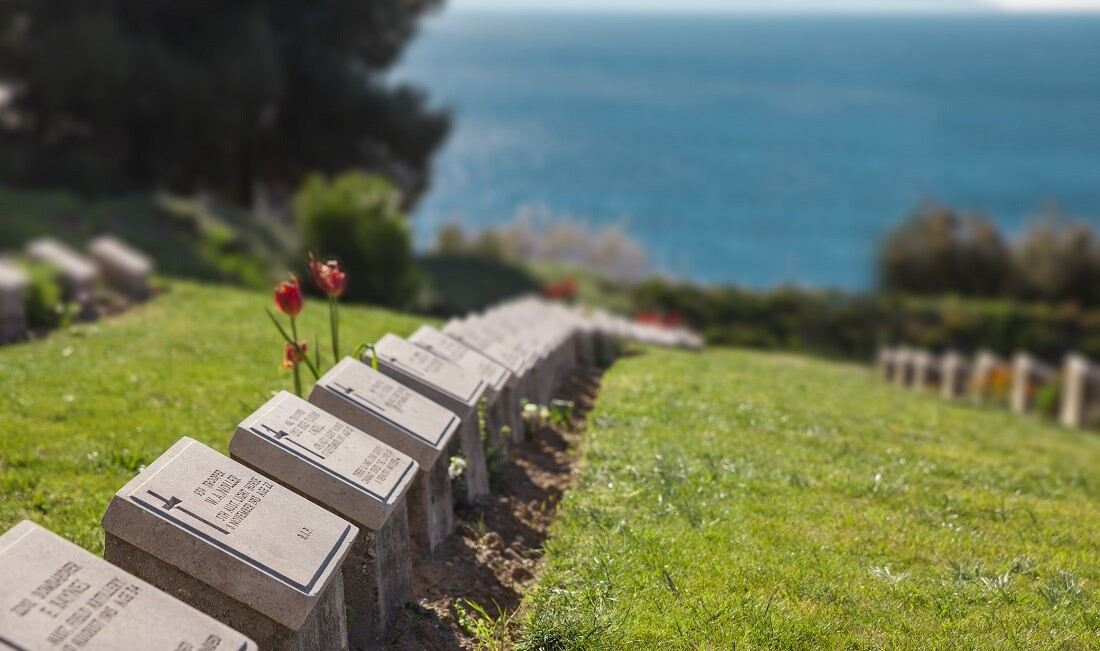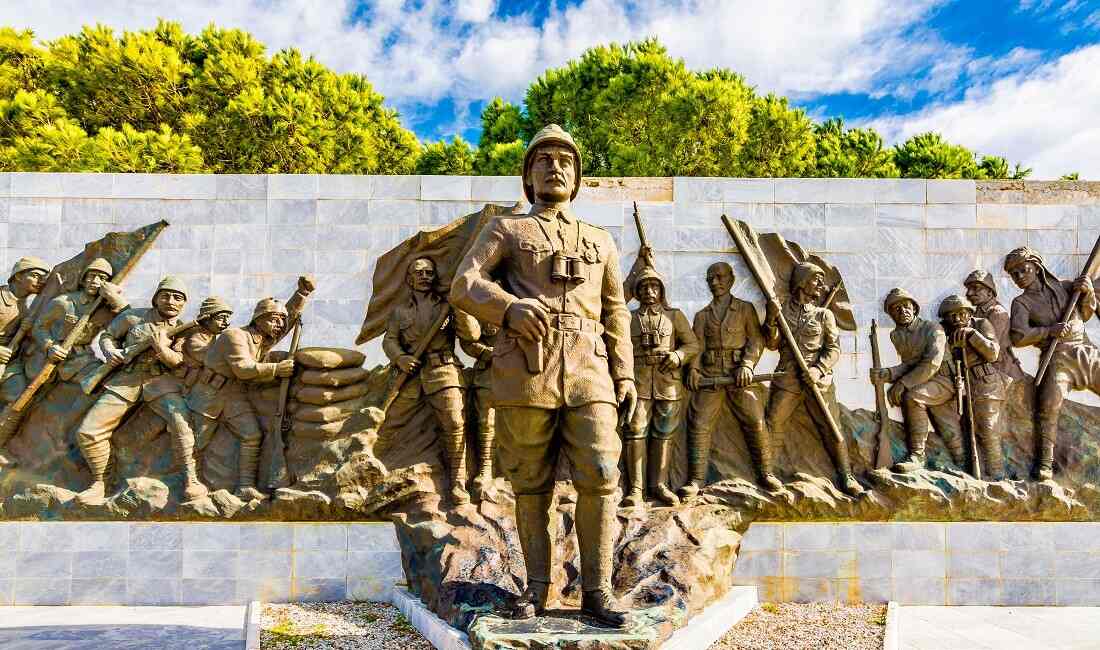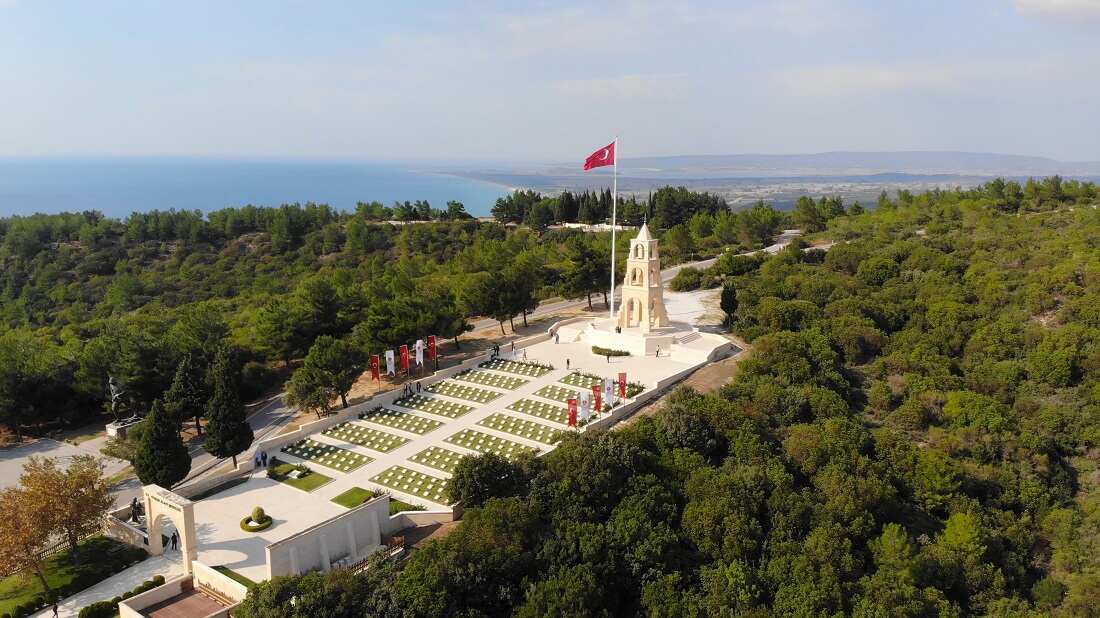
Gallipoli is a small peninsula in northwest Turkey near the Dardanelles strait. During World War I, the Gallipoli campaign gave the area a lot of historical importance. The British, French, Australian, and New Zealand military forces worked together on this military operation to take Istanbul, the capital of the Ottoman Empire. Around 130,000 men were killed in battle during the war, which lasted from April 1915 to January 1916, causing significant casualties on both sides. Many historians consider the Gallipoli campaign one of the most important events during World War I because of the war’s far-reaching effects on politics, society, and the military. The campaign’s impact on the war and the world at large, as well as the historical context in which it took place, are important topics for study and reflection.
The Gallipoli Campaign was a World War I military operation on the Gallipoli peninsula in Turkey between April 25, 1915, and January 9, 1916. During the campaign, the Allied forces, led mainly by Britain, France, and Australia, worked together to take control of the Dardanelles Strait and Constantinople, now known as Istanbul.
The campaign was to create a new front against the Ottoman Empire and open up a supply line to Russia, an ally of the Allies. The goals of the campaign were to capture the Gallipoli peninsula, establish control over the Dardanelles Strait, and then use it to launch an attack on Constantinople. The movement was also seen as taking pressure off the Western Front, where the war had reached a stalemate.
Troops from Britain, France, Australia, New Zealand, India, and Newfoundland were involved in the campaign. British General Sir Ian Hamilton was in charge of the Allied forces. On the other hand, the Ottoman Empire was ruled by German General Otto Liman von Sanders, who had been recruited to modernize the Ottoman army. Sanders was the leader of the Ottoman military until Ataturk took over. The Ottoman Empire’s defense of Gallipoli was formidable. They had the advantage of defending their own territory and fortified the Gallipoli peninsula with trenches, artillery, and machine guns. They also had the support of the German navy, which had laid mines in the Dardanelles Strait to deter the Allied fleet.
Despite their initial successes, the Allied forces were unable to achieve their objectives, and the campaign ended in failure. The campaign cost the lives of over 130,000 men, including 87,000 Ottoman soldiers, 44,000 Allied soldiers, and over 1,500 civilians. The Gallipoli Campaign is remembered as a defining moment in the history of Australia and New Zealand, where it is known as Anzac Day, and as a significant event in the history of the Ottoman Empire and the Allies.

The Battle of Gallipoli was an effective military campaign of World War I in 1915 on the Gallipoli Peninsula in the Ottoman Empire, now modern-day Turkey. The objective of the Allied forces, consisting of British, French, and ANZAC (Australian and New Zealand Army Corps) troops, was to capture the Ottoman capital of Constantinople (Istanbul) and open up a supply route to Russia.
The campaign began with a surprise landing of Allied troops on the Gallipoli Peninsula on April 25, 1915. The landing was initially successful, with the ANZAC forces securing a foothold on the rugged terrain. However, the British forces faced heavy resistance on the beaches, and the Ottoman forces quickly mobilized to defend their territory. The campaign soon turned into a brutal and grueling battle of attrition, with both sides suffering heavy casualties.
One of the critical battles during the campaign was the Battle of Lone Pine, which took place in August 1915. The ANZAC forces launched a surprise attack on the Ottoman trenches. They managed to capture them but faced heavy counter-attacks and suffered significant losses.
Another significant battle was the Battle of Sari Bair, which took place in August 1915. Again, the British forces attempted to push through the Ottoman lines and capture the high ground. Still, they were met with fierce resistance and suffered heavy losses.
Despite the valiant efforts of the Allied forces, the campaign ultimately ended in failure. The Ottoman forces, led by Mustafa Kemal Ataturk, managed to hold their ground and repel the Allied attacks. However, the movement was characterized by poor planning, inadequate supplies, and ineffective leadership, which led to the eventual withdrawal of the Allied forces in January 1916.
The Battle of Gallipoli was a costly and devastating campaign, with over 100,000 casualties. It had significant consequences for the war, with the Allies losing a valuable opportunity to open up a new front against the Central Powers and the Ottoman Empire gaining a new sense of confidence and independence. The campaign also had significant political and cultural ramifications, particularly for Australia and New Zealand, commemorating the battle as a defining moment in their national identity.

Mustafa Kemal Ataturk played a significant role in the Gallipoli Campaign, which took place during World War I. At the time, he was a colonel in the Ottoman army. He was given command of the 19th Division, which was responsible for defending the Turkish peninsula of Gallipoli.
During the campaign, Ataturk demonstrated exceptional leadership and strategic thinking. He was able to rally his troops and organize successful counter-attacks against the Allied forces, even in the face of overwhelming odds. In addition to that, he was an essential part of the team that defended the crucial heights of Chunuk Bair and Hill 60. Ataturk’s successful defense of Gallipoli played a vital role in the eventual victory of the Ottoman Empire in the campaign. It also earned him a reputation as a skilled military leader. Furthermore, it helped to establish his career as a national hero in Turkey. Following the war’s conclusion, Ataturk went on to become the first president of the Republic of Turkey and was instrumental in modernizing and secularizing the country throughout his time in office.
“Heroes who shed their blood on the lands of this country! Here you are on the soil of a friendly homeland. Sleep in peace and tranquility. You, side by side with the Mehmetçik, are sheep and goats. The mothers who dispatched their sons from far lands! Soothe your tears. Your children are in our bosom. They are at peace and will sleep peacefully. After they gave their lives on this land, they became our children now.”

The aftermath and impact of the Battle of Gallipoli, which took place during World War I, were far-reaching and significant. The campaign resulted in many casualties and losses on both sides, with estimates ranging from 200,000 to 400,000 dead and wounded.
From a military standpoint, the campaign had significant political and strategic ramifications. The failure of the Allied forces to achieve their objectives at Gallipoli led to a re-evaluation of their war strategy, contributing to the decision to open a new front in the Middle East. On the other hand, the Ottoman Empire emerged from the campaign with a newfound sense of confidence and independence, and it played a more active role in the war effort.
Gallipoli also had a significant impact on the broader war. The diversion of Allied resources to the campaign affected other fronts, particularly on the Western Front, where it reduced the pressure on the German forces. The campaign also highlighted the importance of naval power in modern warfare and contributed to developing amphibious warfare tactics.
The role of the Gallipoli in shaping national identities, particularly in Australia and New Zealand, was also significant. The campaign was pivotal in forming both countries’ identities and a turning point in their shared history. The ANZAC troops who fought at Gallipoli were celebrated as heroes. The campaign is commemorated each year on ANZAC Day.
For the Ottoman Empire, the campaign was a significant turning point. It marked a major victory against a European power, and it played a role in the emergence of a new Turkish nationalism that would eventually lead to the establishment of the modern state of Turkey.
In conclusion, the Battle of Gallipoli had a far-reaching impact on World War I and the development of national identities in Australia, New Zealand, and Turkey. Its legacy continues to be felt to this day, and it remains an important event in the history of the 20th century.

The courage and devotion of the troops who fought in the Battle of Gallipoli during World War I are commemorated by the Gallipoli peninsula, which currently serves as a memorial site. The site has numerous memorials, monuments, and cemeteries dedicated to the fallen soldiers, both Allied and Ottoman, including the Lone Pine Cemetery, the Anzac Cemetery, and the Turkish Martyrs Memorial.
Visitors from all over the world visit the battlefields of Gallipoli to pay their respects and learn more about what happened there. This is because the area is a historical landmark and a popular tourist destination. The site offers a unique opportunity to experience the rugged terrain and imagine the challenges faced by the soldiers during the campaign.
Despite the passage of time, the legacy of Gallipoli continues to be felt in the modern day. Each year on April 25, Australia and New Zealand honor Anzac Day, a national memorial day for the men who fought and died at Gallipoli. The day is marked with solemn ceremonies, parades, and services, both in Australia and at the battle site in Turkey.
Gallipoli also has broader significance as a symbol of the sacrifice and bravery of soldiers in times of war. It is a powerful reminder of how war hurts people and how important it is for countries to work for peace and understanding.
